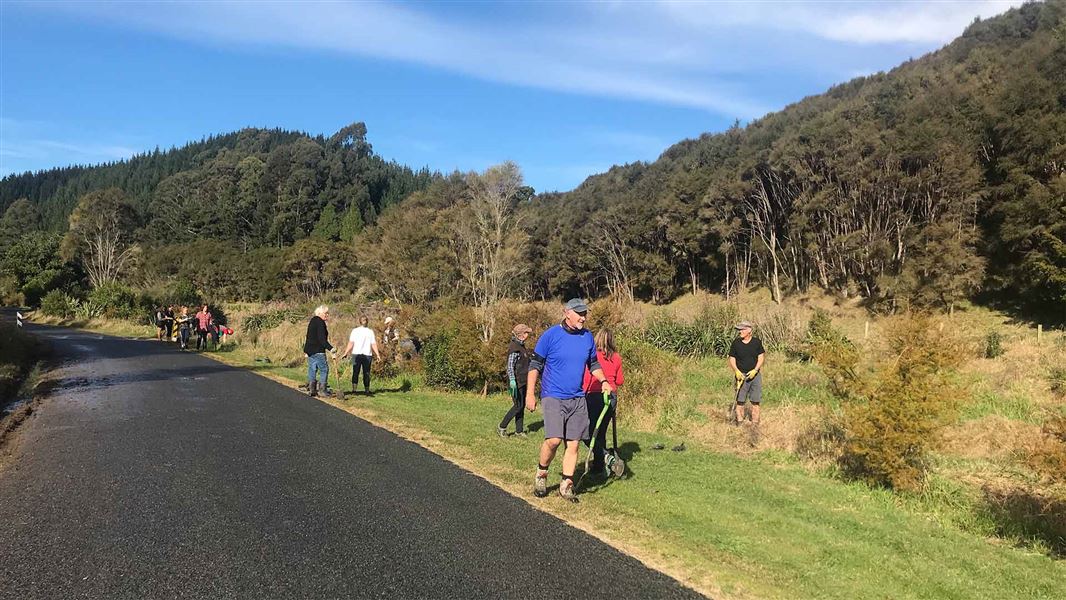Archived content: This media release was accurate on the date of publication.
Date: 17 January 2020
The BioBlitz, a quick and intensive environmental survey of the Waipātiki coastal area, situated just north of Napier, in the Hawke’s Bay, will be taking place over 24 hours on Saturday 1 and Sunday 2 February. The aim is to provide a comprehensive snapshot of all species in the ecosystem, from fish, bugs and birds to lizards, plants and fungi – and everything in between.
A range of public talks with experts will also be held across the weekend, covering a huge range of native species. Talks include an informative expose of the important role bugs have in our world by world-famous ‘Bug Man’ Ruud Kleinpaste.
DOC Senior Ranger Denise Fastier says, “This is a great opportunity for people to get to know their native neighbours better and contribute to the conservation and protection of biodiversity at Waipātiki, with some citizen science.”
The Waipātiki community has a long-term vision to enhance local natural and biodiversity values, which will contribute to large scale Hawke’s Bay conservation initiatives including Cape to City, Poutiri ao ō Tāne and Whakatipu Mahia.
As a first step, measuring exactly what exists in the local environment will form a useful baseline for future management of the area.
“We know that nationally there has been a massive decline in biodiversity since the settlement of Aotearoa/New Zealand by humans. While we’re fortunate to have a large conservation estate where habitats and species have some protection, much of this area exists in mountains and upland areas,” Denise Fastier says.
“Coastal sites such as Waipātiki are less well represented in terms of protection for native habitat and species. This BioBlitz is a great opportunity to build our knowledge about what exists in an area like Waipātiki.”
Kay Griffiths, Biodiversity Hawke’s Bay Guardians Chair, says, “Anyone can take part. If you have a passion for the environment and biodiversity, are a BioBlitz veteran or budding citizen scientist, Waipātiki is the place to be, come early February.”
People interested in joining the Waipātiki BioBlitz can visit the Biodiversity Hawke’s Bay Facebook page for more information and register via the Biodiversity Hawke’s Bay website: www.biodiversityhb.org.
The BioBlitz and Waipātiki community initiative is supported by DOC, Hawke’s Bay Regional Council, and Hastings District Council.
Background information
Waipātiki BioBlitz – 1-2 Feb 2020
Waipātiki project and biodiversity overview
The Waipātiki community is aiming to turn the tide of biodiversity loss on their own back doorstep with a “sanctuary” type project inspired by larger-scale initiatives across the Hawke’s Bay including Cape to City, Poutiri ao ō Tāne and Whakatipu Mahia. These projects all align with national conservation initiatives including Predator Free 2050, New Zealand Biodiversity Action Plan 2016-2020 and the draft New Zealand’s Threatened Species Strategy.
Habitat loss in New Zealand
Habitat loss and modification has resulted in extinctions across New Zealand:
- 40 indigenous land and marine species have become extinct
- Over 60% of native freshwater fish, and freshwater crayfish (koura) and mussel species (kākahi) are threatened with extinction
- More than 3800 New Zealand terrestrial, freshwater and marine species are threatened - almost four times as many as in the 1900s
- Seven of NZ's ten official 'indicator species' for measuring biodiversity status are threatened: lesser short-tailed bat, kiwi (5 species), kākā, kōkako, mōhua (yellowhead), wrybill and woodrose.
- 1000 native animal, plant and fungi species are under threat
- Almost two-thirds of NZ's seabirds are threatened with extinction.
Contact
For media enquiries contact:
Email: media@doc.govt.nz
